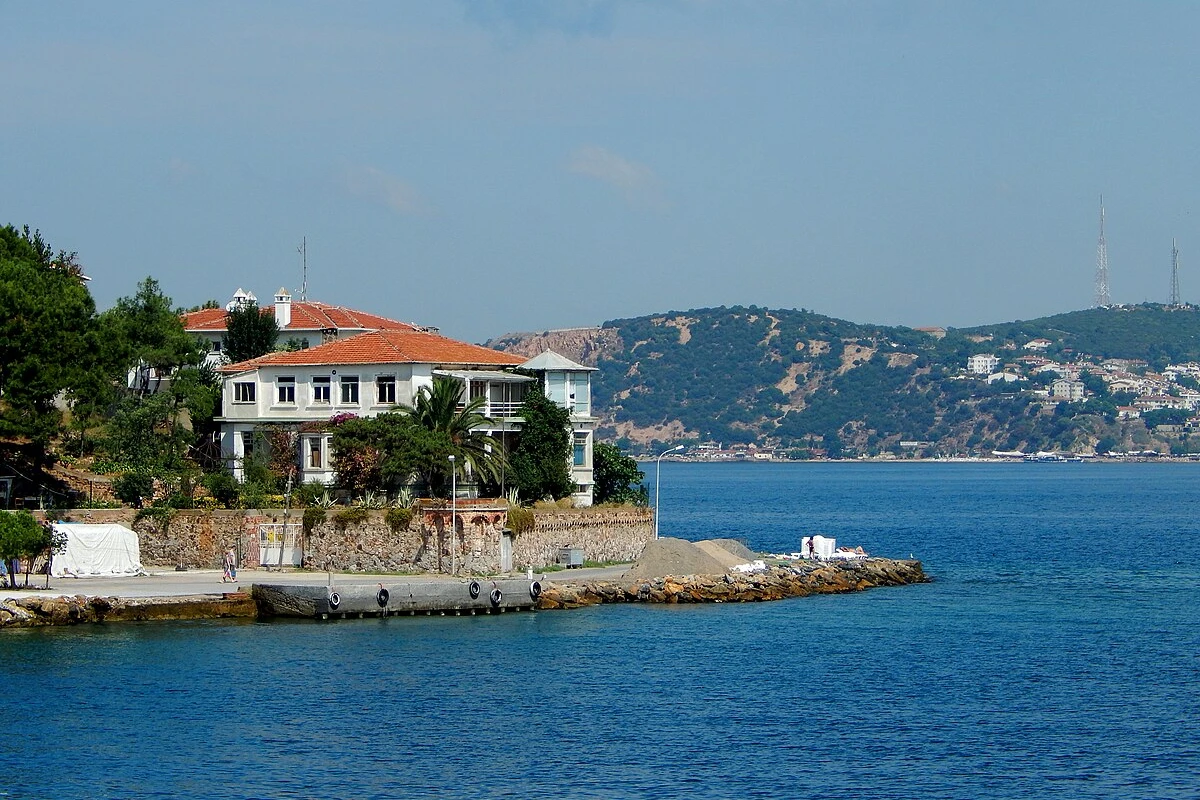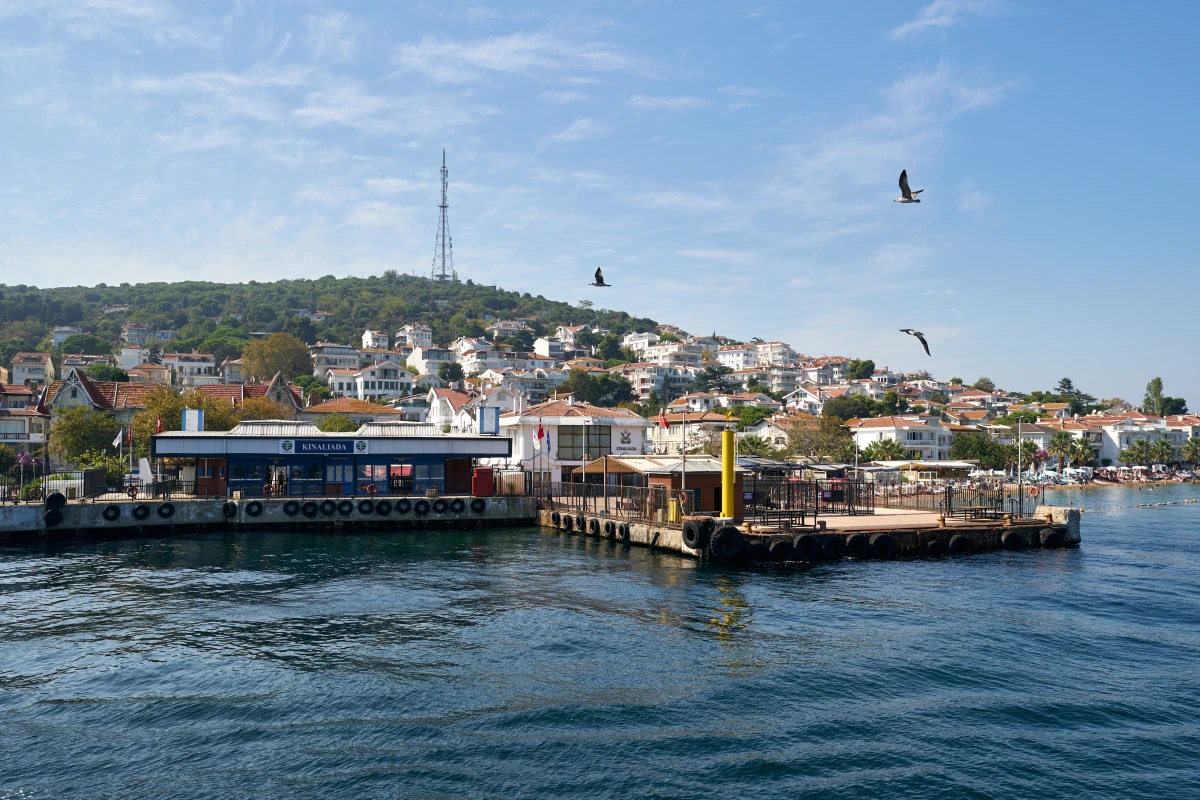If you’re planning a trip to Istanbul, chances are you’ve already heard about the Princes’ Islands. Among them, Büyükada shines brightest, the largest, the busiest, and the most glamorous. It is also the final stop on the ferry line, a dramatic arrival point where thousands of visitors step ashore each day. What awaits them is not just sea views and quiet streets, but a fascinating mix of abandoned wooden giants, Byzantine monasteries, colorful mansions, and tales of revolutionaries in exile.
In this guide, we’ll explore Büyükada’s highlights: its geography, monasteries, historic streets, iconic landmarks, and even where to stop for the best terrace meal. By the end, you’ll know exactly how to make the most of your day on this unique island.
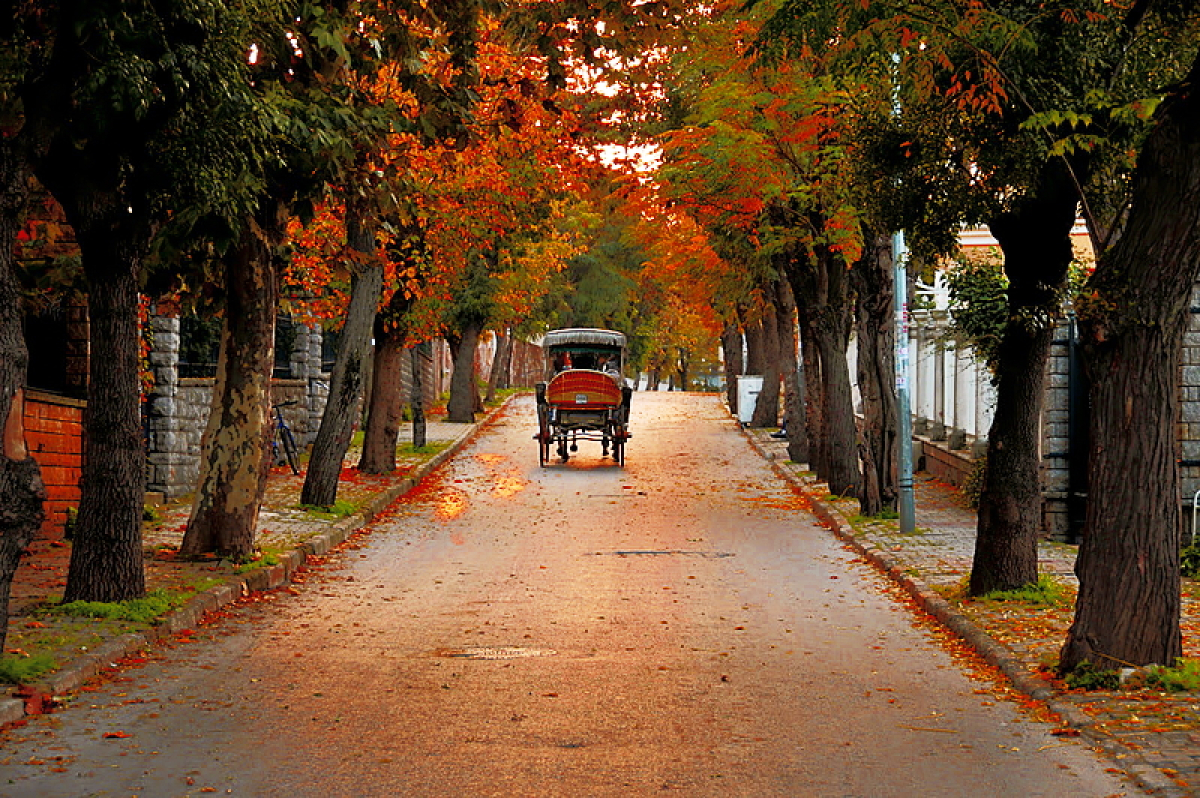
Plan Your Visit
| 🗺️ How to Get There | Ferry from Kabataş, Eminönü, or Bostancı via Şehir Hatları or private lines. Approx. 40–80 minutes depending on departure pier |
| 🌄 What to Do | Visit Hristos Monastery and St. Nicholas Monastery for panoramic views. Explore Surp Asdvadzadzin Armenian Catholic Church. Walk around the Hristos Hill to capture the best views of Istanbul and the shores of the Marmara Sea. Wander at Çankaya Street and admire John Pasha and Mizzi Mansion. |
| 🍽️ Eat & Drink | Try out Eskibağ Teras Restaurant with delicious sea food with mezzes (side dishes) In the city center, you can also have a dinner at Balıkçı Süleyman. |
| 🕓 Best Time to Visit | Spring and early autumn for mild weather and fewer crowds. |
To make it easier, we’ve included a Google Maps itinerary with the best spots to take a photo on the go so that you can follow every stop on your own.
Click each location spot to get further information, and keep reading our post!
Geography & Natural Setting
Büyükada’s landscape is shaped by two hills, each with a story of grandeur and mystery. The most famous is Christ Hill (Hristos Tepesi), which rises 160 meters and can be spotted from the ferry before you even arrive.
At its summit sits the Prinkipo Greek Orphanage, once the largest wooden building in Europe and today the largest wooden building in Europe.
The second hill has the Greek Church of St. Nicholas (Ayios Nikolas). Just next to it, there is a field called Lunapark (The Fair) where the Greeks used to organize carnivals.
In the southern side of the island, there is a forest with pine trees and mimosas. Adalar Municipality organizes annual “Mimozafest” to celebrate the natural beauties of the Princes' Islands. Each year, the residents adorn their balconies with flowers and come together in the festival.
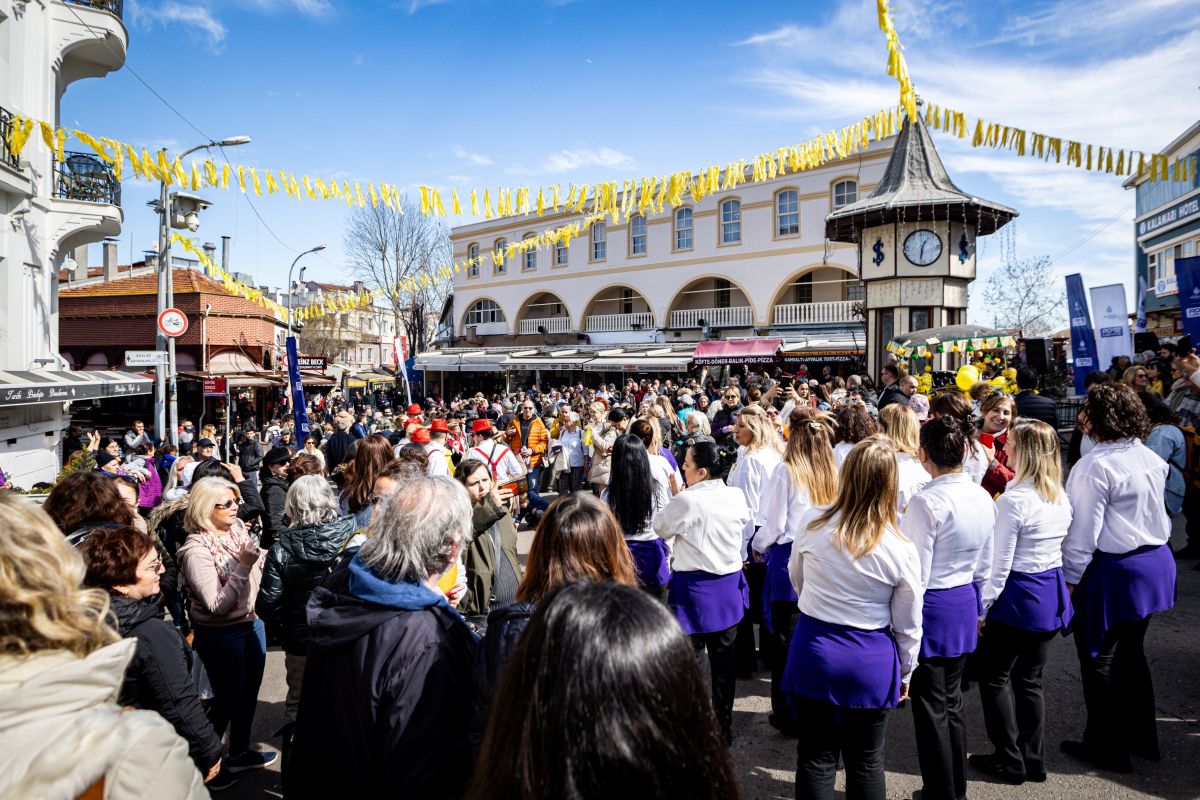
Getting Around the Island
Unlike the rest of Istanbul, no private cars are allowed on Büyükada, which preserves its calm and nostalgic atmosphere. Instead, visitors travel by electric minibuses, which wind their way from the pier up into the hills.
BA-1 Line: Climbs to Christ Hill, perfect for visiting the monastery and enjoying sweeping views of the Marmara Sea.
BA-2 Line: Heads to the St. Nicholas Church (Ayios Nikolaos), with its final stop at Lunapark. Once the center of Greek festivals and carnivals, Lunapark is now eerily quiet — a reminder of the vibrant community that once thrived here.
Keep that in mind: prices are double compared to mainland Istanbul. The current fare is around 92 TRY as of 2025.
Must-See Sights on Büyükada
Büyükada Pier
Your first steps on the island take you through the historic pier, a masterpiece of early 20th-century architecture. Built in the First National Architectural Movement style, it reflects both Ottoman and Western aesthetics. Pointed arches and colorful tiles evoke Ottoman mosques, while its towers, terraces, and strict symmetry draw inspiration from Europe and America. It’s the perfect introduction to the island’s layered identity.
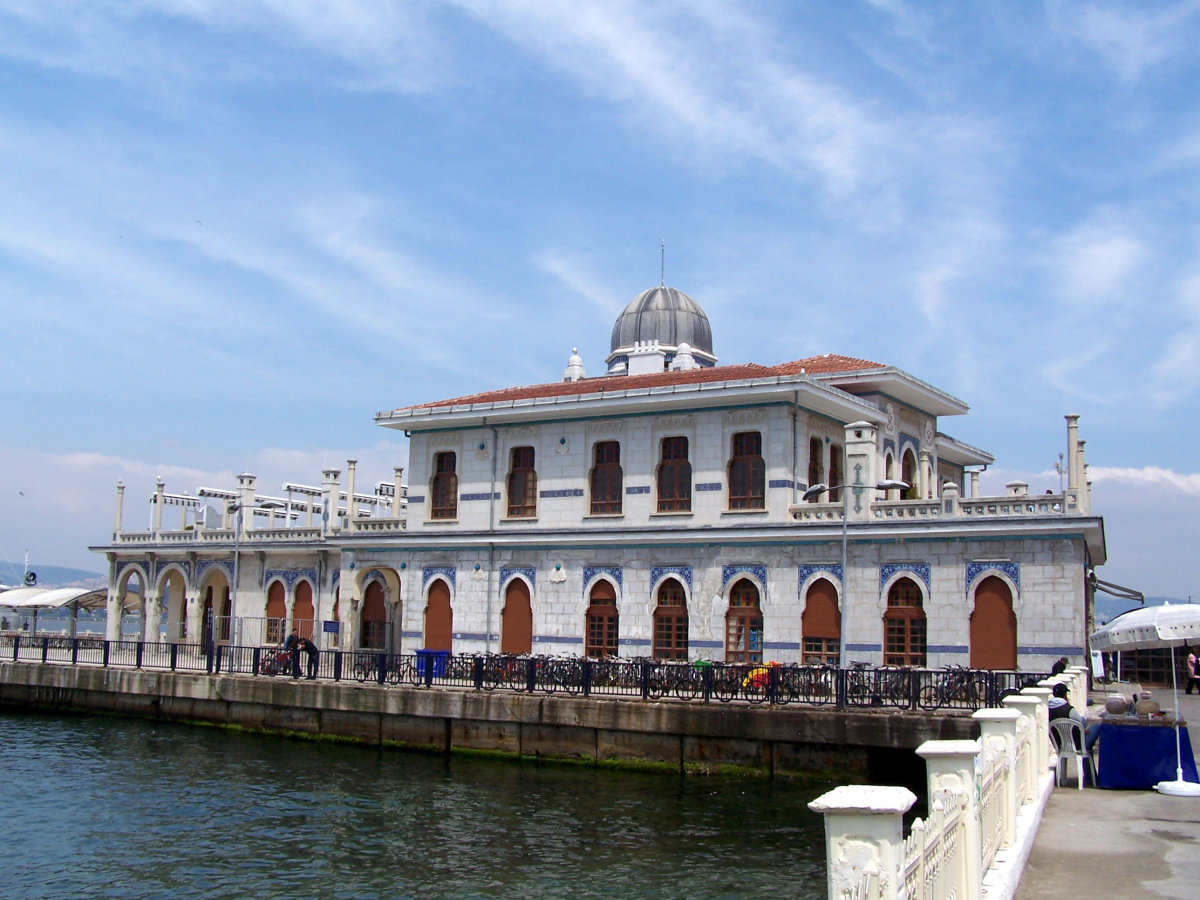
Monasteries & Churches
Christ (Hristos) Monastery: Standing on Christ Hill, this monastery has Byzantine origins but was rebuilt in the late 16th century by Patriarch Pigas with the help of two monks. It was later entrusted to the Christian Guild and saw major restoration in 1869. Its stone walls, flat wooden ceilings, and simple three-aisle layout speak of centuries of devotion.
Prinkipo Greek Orphanage
It is the largest standing wooden structure in Europe, now abandoned and weathered by time. During the initial years of construction, it was never intended to be an orphanage. It was designed to become a luxury hotel and casino.
When the Ottoman authorities refused permission, it was turned into an orphanage that sheltered generations of children until it was closed in the 1960s. Its empty halls and creaking wooden beams still capture the imagination of anyone who ventures close.
The orphanage hosted up to six thousand children until the emergence of the Cyprus dispute in the 1960s, with provocative incidents against the Greek community. The majority of Greeks left Büyükada, and this place continues to become vacant due to a lack of funding opportunities.
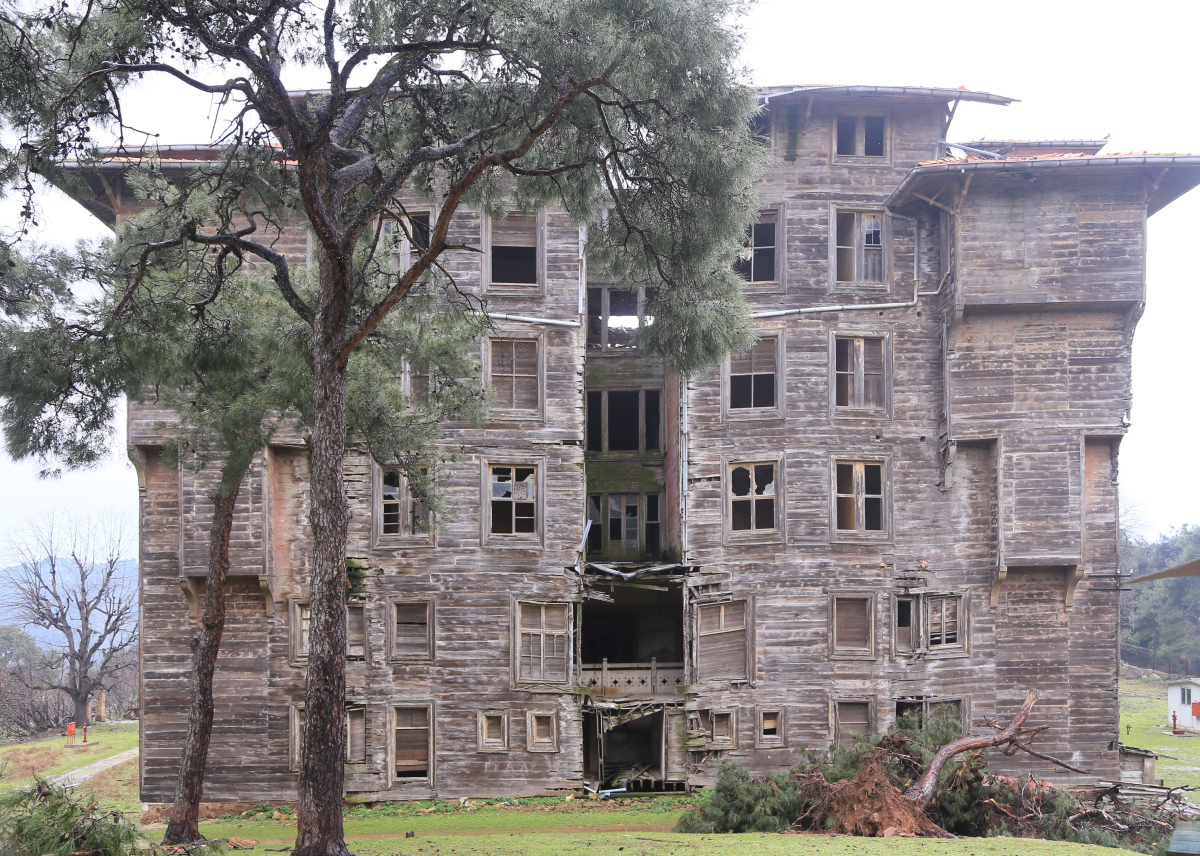
St. Nicholas Monastery and Church: The island’s most famous church, with a unique architectural twist. Instead of the tall domes of typical Byzantine churches, its dome drum is unusually low, flanked by four cylindrical towers found nowhere else. Inside, a plain wooden iconostasis contrasts with the treasure it houses, the silver-covered icon of St. Nicholas, rescued from a fire in 1852. Every year, on December 6, pilgrims come to honor the saint. Nearby, the dried-up Aya Paraskevi spring whispers of past miracles.
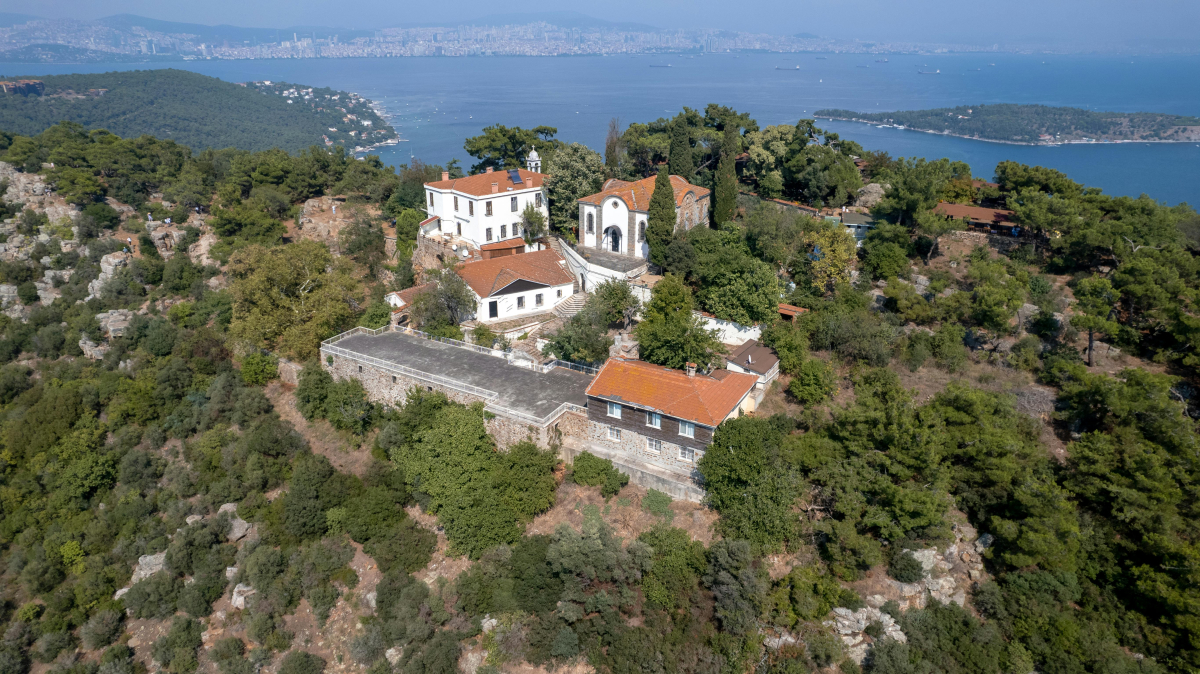
San Pacifico Catholic Church: Built in 1866 through the generosity of Signora Sofia Corpi, widow of banker Ignazio Corpi. The Corpi family was a pioneer in bringing steam mills to Istanbul. Inside, you’ll find vivid paintings by the Romanian artist Giovanni Battista Galiardi, giving the church a distinctly European feel.
Surp Asdvadzadzin Armenian Catholic Church: The only Armenian Catholic church on the island, completed in 1858 with funds from Andon Apelyan. Its rose window, Neoclassical columns, and bell tower, added in 1894, give it a serene dignity. Inside, a devotional painting dedicated to Saint Anne continues to inspire worshippers.
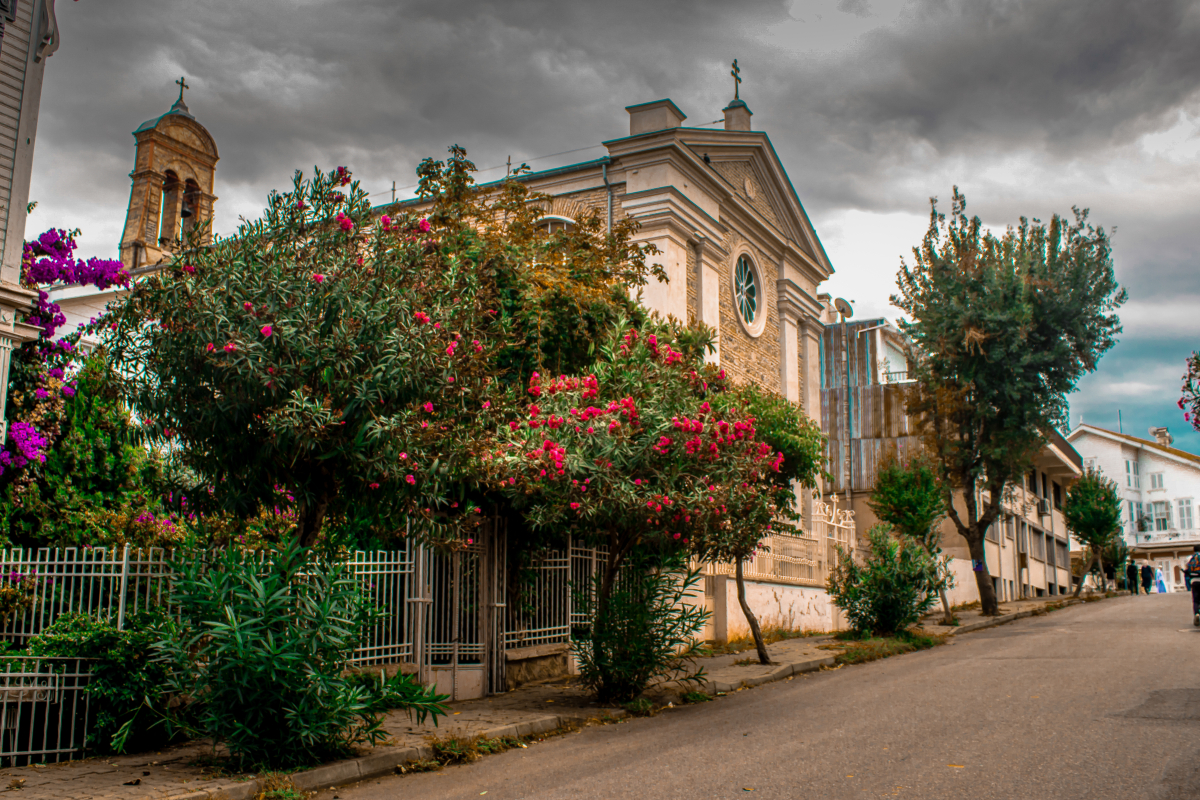
Iconic Streets & Mansions
The soul of Büyükada is best discovered on foot. Stroll along Çankaya Street, lined with immaculate mansions, each with its own dramatic tale.
John Pasha Mansion: Built by the man who introduced ferry services to the islands. Its grand double doors, garden fountains, and small watchtower, where John Pasha himself monitored approaching ships, reflect both power and refinement.
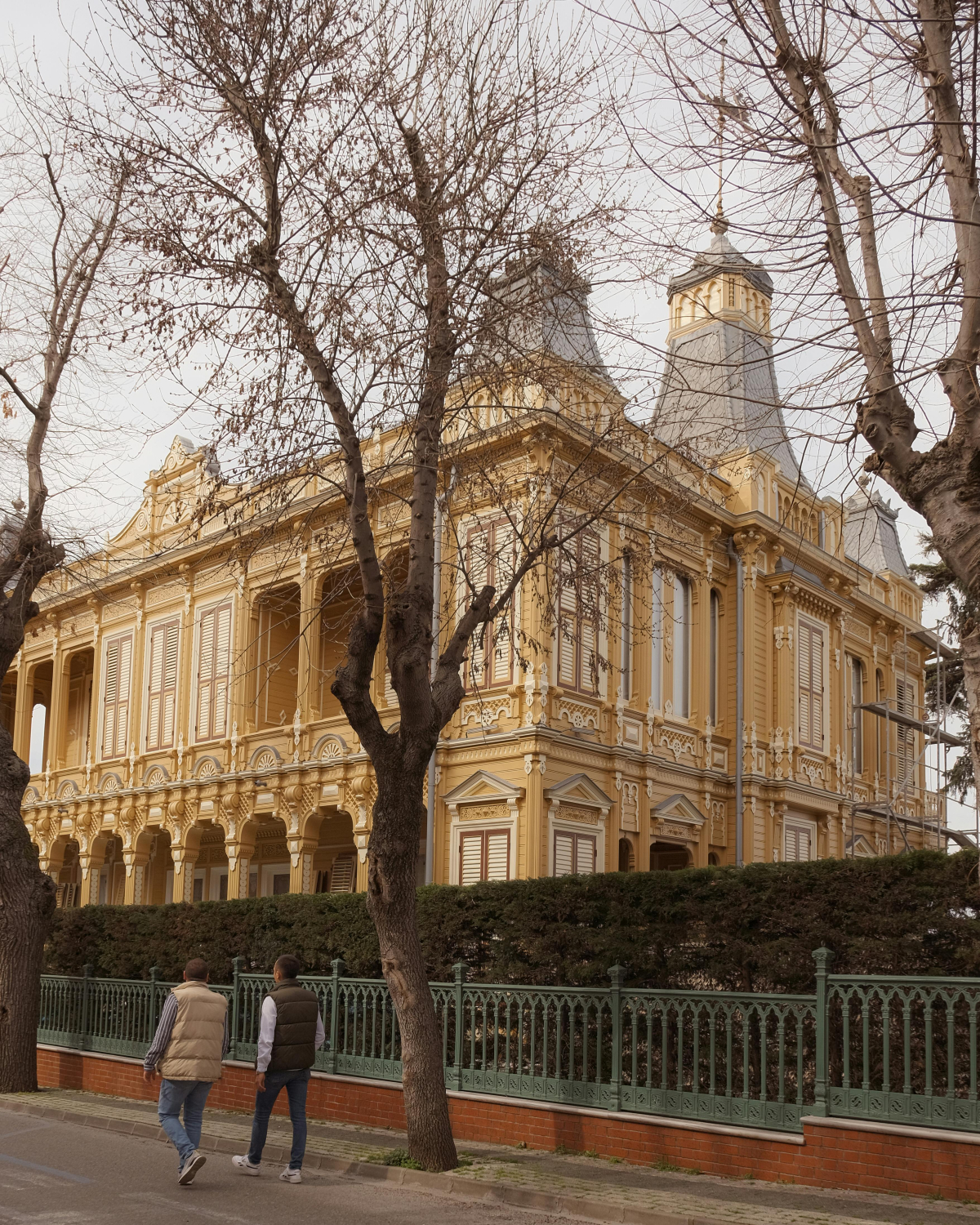
Trotsky House: One of the island’s most intriguing landmarks. From 1929 to 1933, the exiled Russian revolutionary Leon Trotsky lived here, writing works on Russian history while under constant threat of assassination. Though the mansion is now a ruin, it still attracts visitors drawn by its dramatic past. Trotsky eventually left for Mexico, where he was killed with an ice pick in 1940, but Büyükada remains one of the few places where he lived and worked in exile.
Mizzi Mansion: Perhaps the most spectacular residence on the island, with its castle-like façade and high tower. Initially owned by a Greek family, it later became associated with Lewis Mizzi, a Maltese-British lawyer passionate about astronomy. Mizzi added a second tower designed by the famed Italian architect Raimondo d’Aronco, turning it into a glass observatory. After the 1894 earthquake damaged it, d’Aronco himself restored the building in 1895. For a time, it operated as the San Remo Hotel, earning the nickname “Al Palas” thanks to its red walls. Today, it is still under restoration, but its silhouette remains one of Büyükada’s icons.
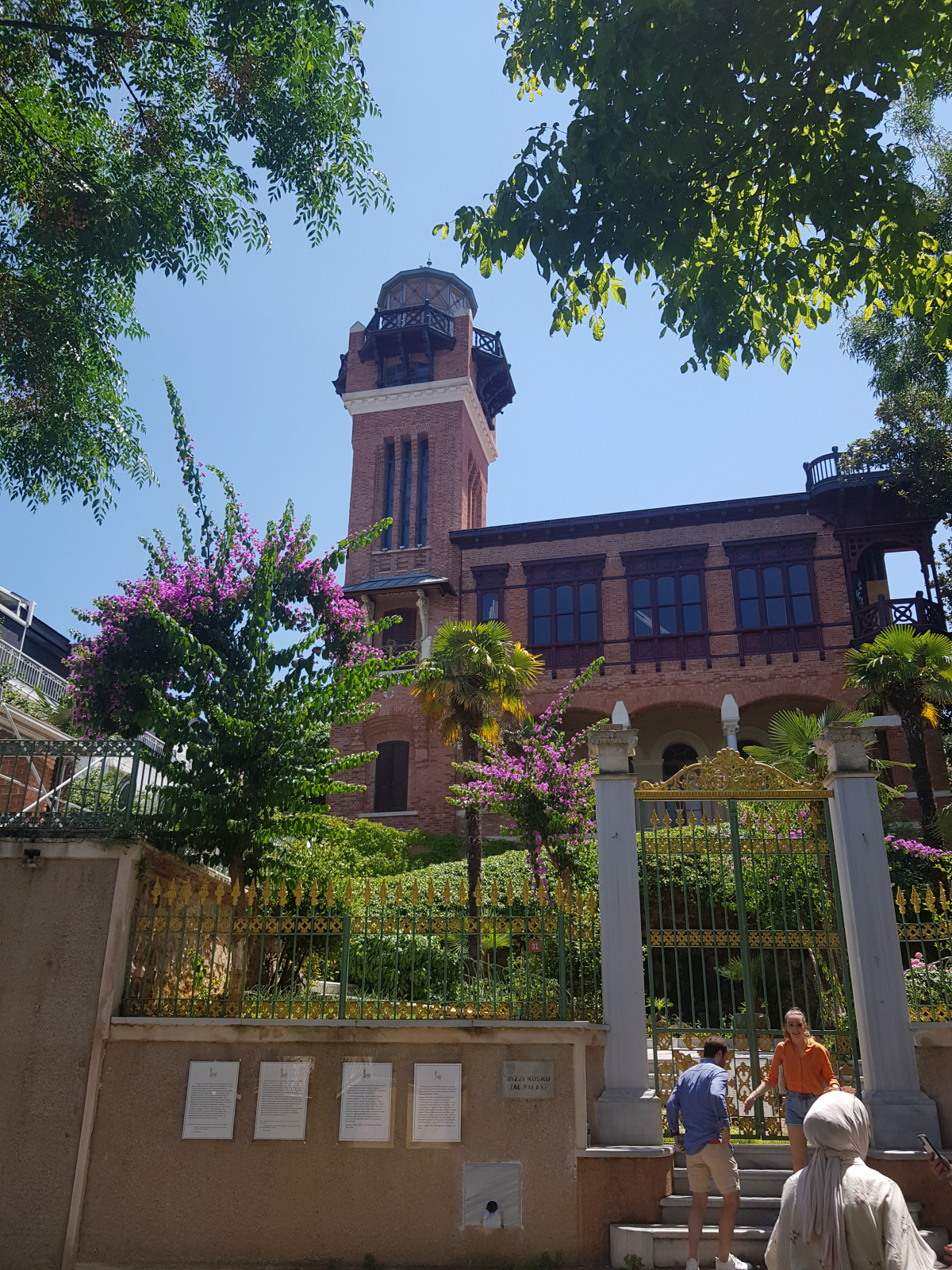
Splendid Hotel: The largest and oldest hotel on Büyükada is still in operation. Built by Kazım Pasha, a respected statesman admired by Atatürk, the founder of the modern Turkish Republic. The hotel was decorated in Art Nouveau style and has hosted guests for over a century. Kazım Pasha, who also built the Hejaz Railway from Istanbul to Mecca, wanted Büyükada to have a proper hotel when he retired. For decades, the Splendid has embodied the elegance of Istanbul’s summer holidays.
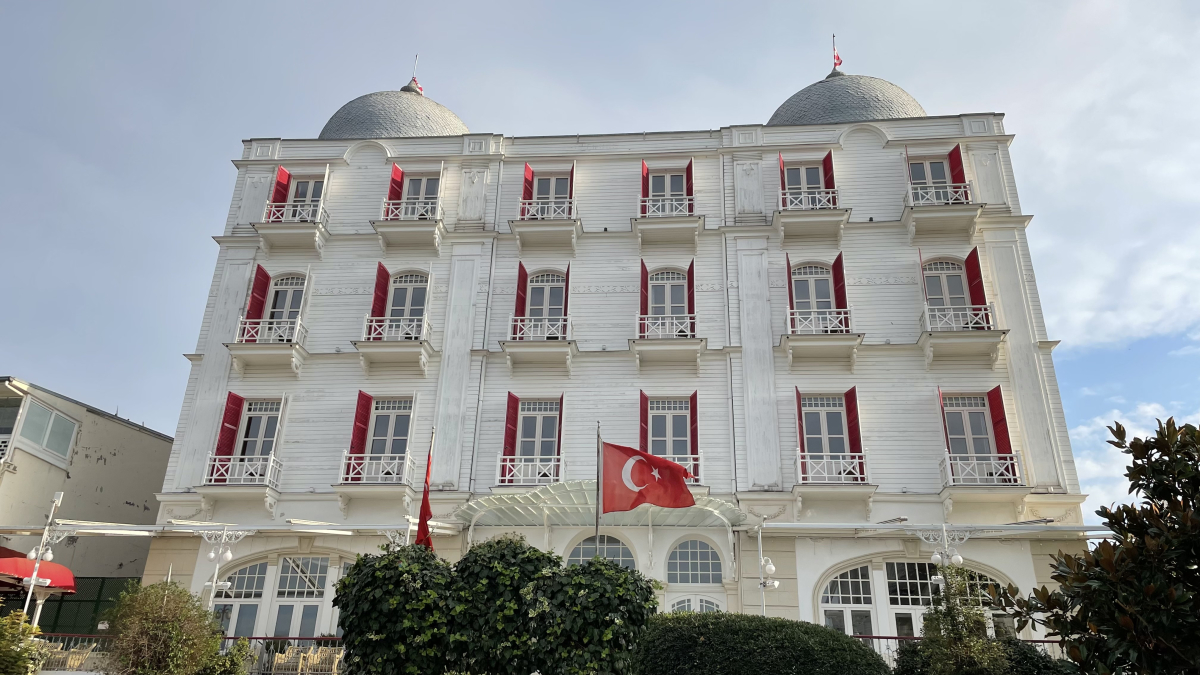
Adalar (The Princes' Islands) Museum: The Islands Museum is perhaps Turkey's first museum established by a local NGO (Adalar Foundation) in cooperation with the municipality (Adalar Municipality), without relying on the state, local government, or a large capital group. The museum provides a chronological overview of the islands' history, as well as artifacts from St. Nicholas Church.
Note that it is in the eastern part of the island; therefore, if you would like to visit, you need to walk through the Maden district, which is precisely opposite to the itinerary.
Eskibağ Teras Restaurant
No visit to Büyükada is complete without a meal at Eskibağ Teras Restaurant, on the slopes of Christ Hill. Its wide terrace overlooks the Marmara Sea with a view of the chains of islands, offering one of the best dining views on the island.
Eskibağ is renowned for its fresh seafood and traditional Turkish mezes, including grilled seabass, fried calamari, and smoky eggplant salad, often paired with a glass of rakı at sunset. The atmosphere is relaxed yet elegant, making it just as appealing for a casual lunch as for a long, lingering dinner.
Keep that in mind: it is recommended to choose the seasonal fish to have the best experience. Thanks to our fish widget, you can find out the most suitable recommendation.
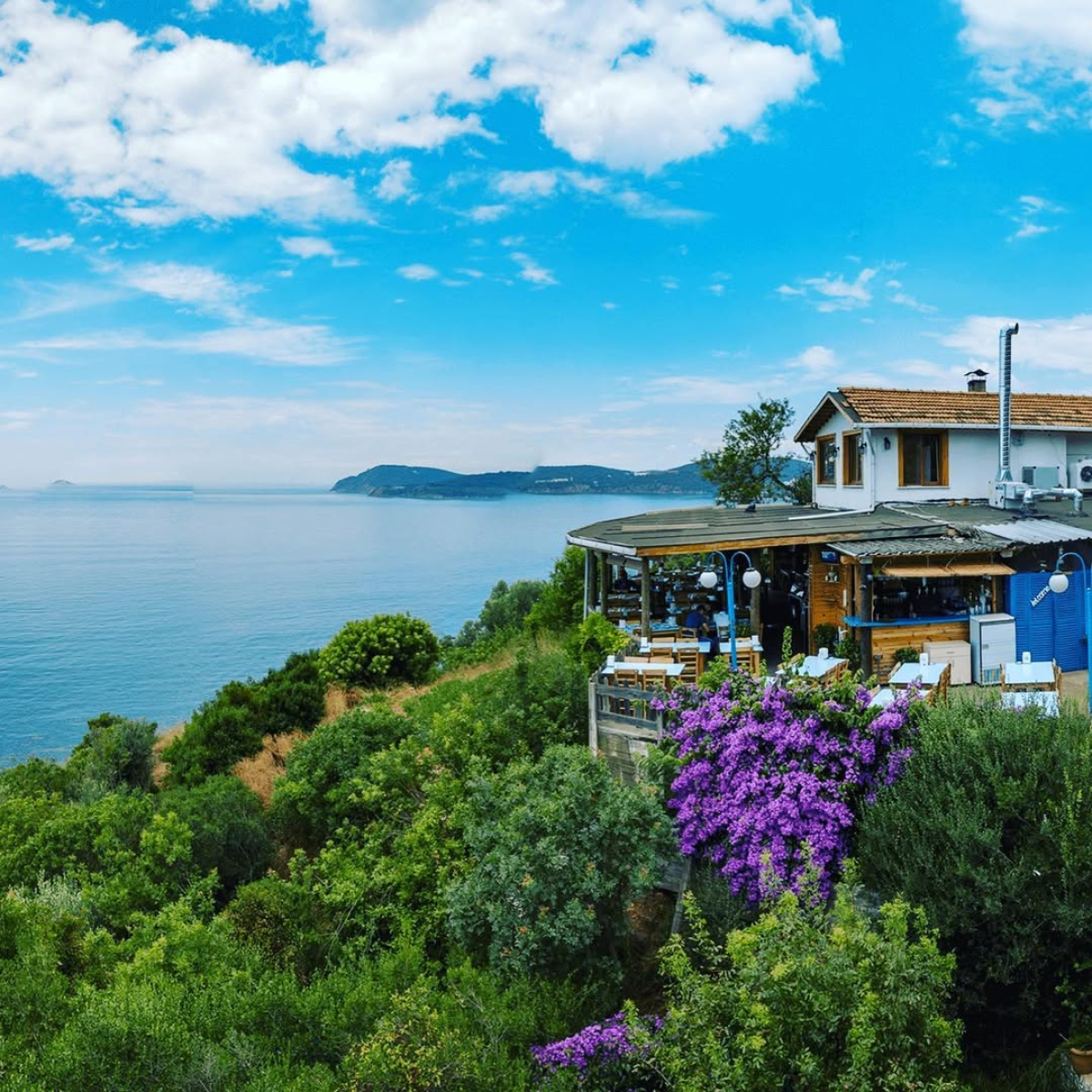
The name Eskibağ means “Old Vineyard,” recalling the days when these hillsides were covered with grapevines and orchards. Dining here is not only about enjoying the food but also connecting to Büyükada’s agricultural past.
Insider Tip: Arrive in the late afternoon to catch the sunset; the terrace tables fill up quickly, especially on weekends.


